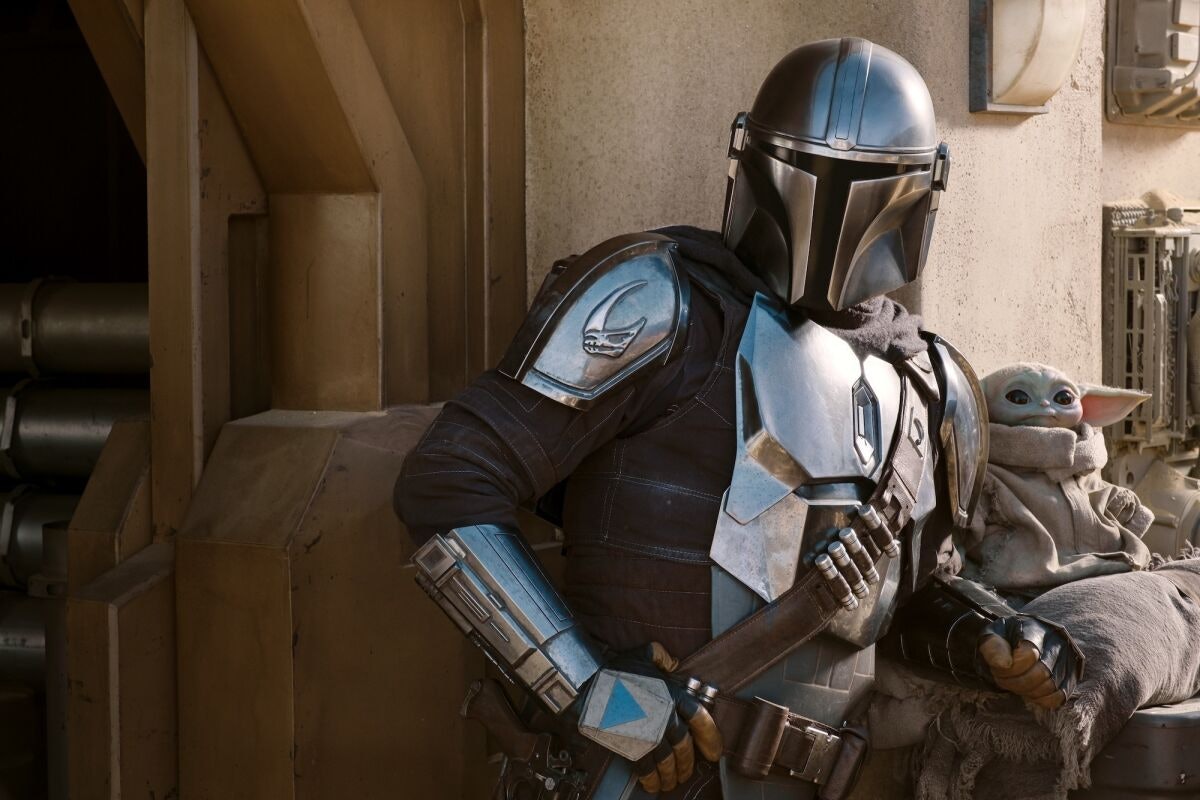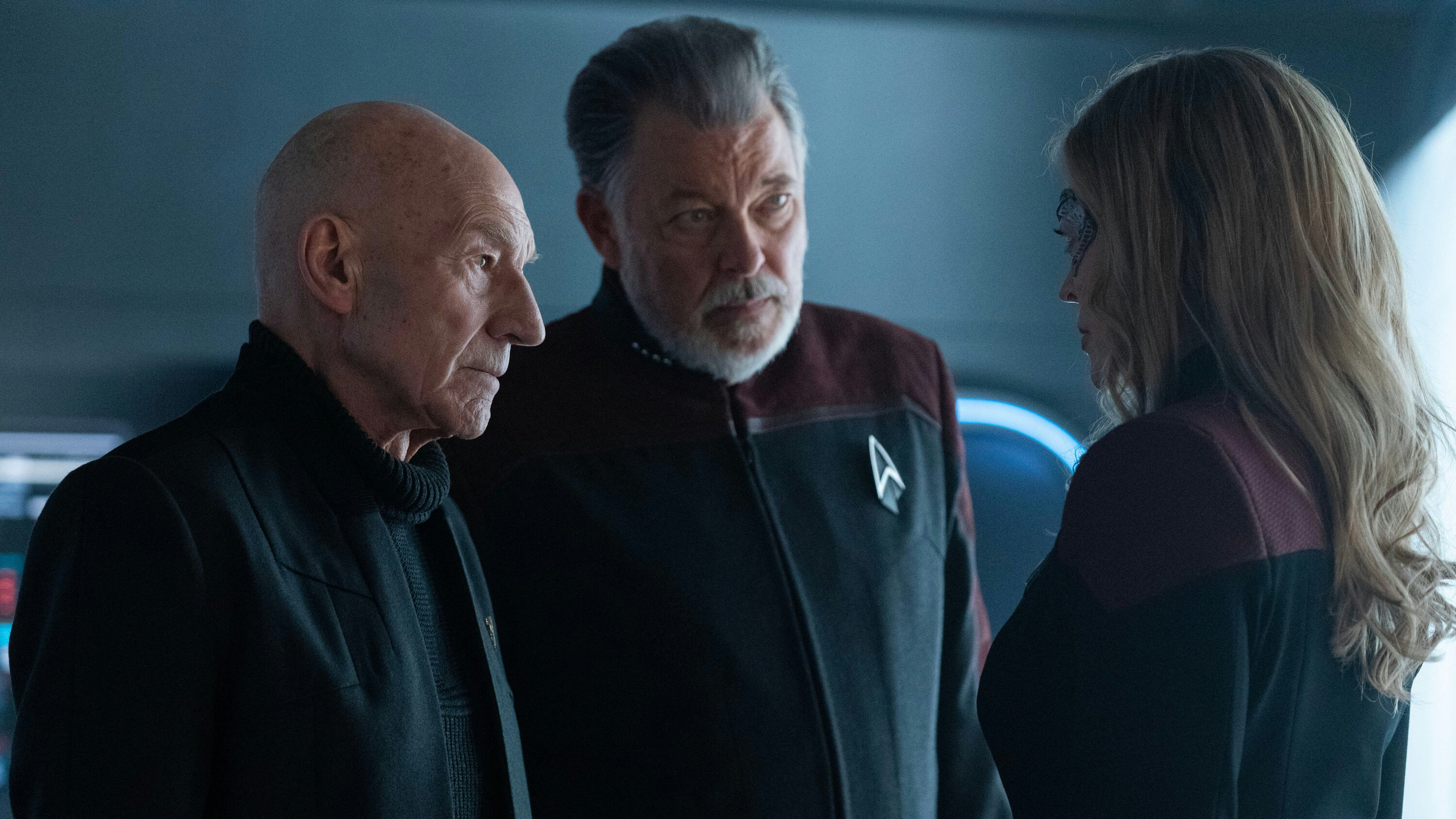
Subscribers of nerd culture have been indulged with their favorite worlds and characters for so long that it’s no longer accurate to say we are “eating” – if anything, we’re overfed. It’s probably why the concurrent airing of big event Star Wars and Star Trek TV hasn’t drawn much attention, despite them sharing one major similarity.
In both cases, we’re seeing the third season of a show that was criticised in earlier outings, who now seek to right their past wrongs and reestablish themselves as something worthy of hype. In their third outings, The Mandalorian and Picard try to achieve the full potential of their premise: it’s less reboot, more reset.
The Mandalorian never waned in popularity, but after a second season spent setting up spin-offs (the first of which Mando appeared in to retcon his own cliffhanger), Season 3 is clearly steering the ship back to galaxy-hopping, bandit-popping, isolated adventures. Watching this week’s episode, with its returning villain, clear conflict between shakily united factions, and an undeniable centering of, well, Mandalorians, you could easily judge this season as a marked improvement. But despite the weekly new planets and interest in mapping out a post-Empire world, Episode 7 feels like a season’s worth of interesting story crammed into one episode. The focus on Mandalore’s place in a galaxy up for grabs is welcome, but is it too little too late?

Rather than premiering with an eager audience and instant praise, Picard has been fighting an uphill battle from day one. The first two seasons were slated by Trekkies, as they showed little awareness of what actually made The Next Generation good: inventive, episodic dilemmas that eschewed cliche and prioritised character-driven problem-solving. The third and final season reunites the entire main Enterprise-D crew (plus a healthy array of cameos and guest stars), but this nostalgia-bait feels more excusable thanks to the show’s sharp increase in quality. Episode by episode, fans are noticing how confidently Picard is being helmed, with writers that understand TNG’s core character dynamics should drive the story above all else.
It would be disingenuous to argue Picard’s course correction is devoid of a desperation to appeal to fans. The show still venerates the Golden Era of Trek – including Voyager and DS9 – with lingering shots on character callbacks and wistful music cues to remind us, gee, how good was Trek back in the day? But Picard goes further than dragging up actors and aliens from Trek’s ‘90s heyday, it also tries to use the same dramatic language that made TNG iconic.
Crowding your scene with R4-D4s and Easter eggs is easy — uncovering something fresh about the psychology of pre-established characters is something else. Captain Picard’s final voyage trades in old-school thrills whenever it can (if we can ignore the demonic supersoldier stuff), the high point of multiple episodes being two old allies with conflicting ideals trying to get through to each other. Calling Picard original would be a stretch, but there’s an effort to make us care about the characters beyond our pre-existing love for them. The Mandalorian, meanwhile, makes the baffling choice to defocus its central pair – maybe because the writers recognise there’s a hard ceiling to how much color and nuance can be extracted from action figures.

Our current moment in popular culture puts big studios largely at the mercy of their fans; if you pride your franchises on how in tune you are with your audience’s taste, you can really suffer by appearing out of touch with what they want to see. This is by no means a healthy symptom of our entertainment landscape: we are by now profoundly aware of the entitled and venomous ways fandoms can behave when they don’t get the toys they want. But audiences know when they’re being pandered to, and The Mandalorian and Picard’s third seasons are clear examples of a culture that prioritises keeping audiences satisfied at all costs.
Motive is key in differentiating these series: The Mandalorian’s back-to-basics approach is clouded by last week’s announcement of all the post-Empire stories soon to be hosted on Disney+ and cinema screens – Moff Gideon’s return was overshadowed by the looming promise of live-action Thrawn in his Shadow Council and all the retroactive set-ups for the sequel trilogy. For The Mandalorian, it’s always what’s coming next; for Picard, it’s everything that came before.
Picard’s final season course correction feels less like an assurance that the future is in safe hands, and more like an acknowledgement of audiences who’ve spent decades with these characters and can call bullshit when they smell it. It’s okay for Picard to rest on its laurels because it knows what strengths to play to; The Mandalorian still seems to be figuring out what its strengths are.







